Growing up on the fringes of the Deep South, in the East Texas piney woods region, there was always a tricky summer ballet we had to perform. It was a careful balance between wandering down to the local pond — where we’d sneak through the woods after carefully climbing through a barbed-wire fence erected to keep us out — to chase bass and bream on sticky summer days and handling the “chores” that came with living on three-quarters of a pine-tree pocked acre.
If you live in pine tree country in the South, where giant Georgia pines, sugar pines, loblolly pines and the like grow tall and straight, you’re also familiar with the unfortunate leave-behinds of these magnificent trees. While they provide cooling shade and spice the air with their welcome scent, the South’s big pines also shed more pine straw than seems possible. Our backyard in East Texas probably had a half a dozen really tall loblollys that were big enough around that, even if we joined hands, two of us couldn’t wrap our arms around the trunks. And these massive pines dropped rusty brown pine needles onto our centipede lawn anytime a stiff breeze came up.
During summer, when the outside temperature and the humidity percentage would usually meet somewhere in the mid to upper 90s, we had no excuse when our father would say something like, “When I get home from work, I want all the pine straw in the backyard ready to burn.” With school out for the summer, the only thing really pulling us outside into that sultry, summer weather where a shirt change was required after just minutes away from climate control was the chance to throw Beetlespin soft-plastic lures tight against the banks and sunken trees for meaty bream in the local pond. And doing so was largely frowned upon, even though the pond was on the grounds of a once-great mansion and said estate was clearly abandoned. We were shameless trespassers. On the other hand, raking the spacious backyard of pine straw and putting it into piles was not something we willingly did. It took cajoling. Commands. Full-throated edicts. And then, threats.
“If it’s not done, I’m taking your fishing rods away for a month.”
A month? Sweet Jesus. Give me a rake.
So, we’d grudgingly scarf down breakfast and hurry outside, grab work gloves and rakes and we’d get busy. Knowing full well that by 10 o’clock or so, it would be unbearably hot and miserable, and also knowing that doing the job to the Old Man’s specs would take at least two hours — probably more, because one of us was just 7 years old and spent more time chasing the little green anole lizards that scurried up the trees as soon as we started working — we tried to hustle through the task. It didn’t take long for Brice, my younger brother, and I to absolutely loathe pine straw. Andrew, our youngest brother, approached the task with a more casual countenance. He knew expectations for him were pretty low. For me, being the oldest, and, by default, possessing the most critical eye, the pressure was on. Not only did I have to lead the ragtag gaggle of kids in the task. I was also in charge of quality control.
My motivation? If we get done by noon, we can run down to the pond, sit in the shade and catch some fish. That, of course, appealed to both of my brothers, so when I’d spy Andy chasing lizards or tree frogs, I’d let him know. Brice, who just did everything in slow motion (during little league football practice, he was always the last kid to return from a run around the backstop at the other end of the park — “I’m saving my energy for practice”), was at least dependable. He’d assemble nice neat piles that we could then move into one large mound of sappy pine straw.
Pine straw is a uniquely Southern term. In the West, where our biggest pines are likely ponderosas, pine needles aren’t the source of much frustration among kids turned loose for the summer. But in the South, tumbling pine straw, sometimes six or eight inches long per needle, fell from the treetops at a pretty regular clip. My father, who was just as new to the South as we were when we moved to East Texas in 1980, was convinced that the pine straw, left to decay atop the grass, would choke out the lawn and eventually kill it. He was probably right — the acidic sheddings of the tall trees blocked light from reaching the grass and I’m sure, in time, the blankets of these needles would leech into the ground and alter the soil’s pH enough to prohibit a healthy lawn.
Nevertheless, we hated pine straw. But, on the morning where our ability to reasonably trespass and catch panfish all afternoon was in jeopardy, the three of us managed to pull together a sizable pile of pine straw and rid the bright, green lawn of its burden. After a careful inspection, I deemed our work done for the day.
Then, Brice said something that stopped me in my tracks.
“I think we should just burn it.”
A little over a year ago, about six months after Hurricane Idalia raked its way up the Florida Peninsula and cut inland around Cedar Key, where it then shaved the tall pines of north Florida on its way into Georgia and South Carolina, I stood at the foot of a respectable burn pile. I’d spent the day cutting branches and raking up debris that littered the two-acre lot where we’d built a little house in the woods the year before. It had been 80 years since the area took a “direct hit” from a hurricane, but Idalia broke the mold. The eye of the storm, according to all the satellite maps, went right over our little neighborhood just south of the town of Jennings on the Georgia line. Branches fell. Trees snapped. Power was out for a good week.
From afar, in eastern Idaho, all I could do was watch the damn storm spin on Weather Channel broadcasts and hope that, when it left the area, we still had a house standing. We were lucky. No structural damage to the house. The yard, though, was a mess. We had downed trees that once stood proudly, six or seven stories tall, stretched across the grass and all around the back half of the lot that we’d purposely left in its natural state. There wasn’t much we could do about that. Nevertheless, about six months after Idalia blew through, I found time to get down to Florida for a month or so and clean up what I could with a chainsaw and some hand tools.
And, oddly, my motivation wasn’t too different than it was all those years ago, when finishing the job meant I’d have time to spend a day or two fishing. One of my favorite fly-rod targets these days is the burly bowfin of our Southern swamps — an air-breathing behemoth that slams flies like bass, leaps like tarpon and fights like it’ll never give up. If I could get the debris collected and safely burned, I’d be able to go fishing.
I doused the pile of limbs, branches and a few sizeable pine and water oak logs in fuel and got it going. Flames rose high into the sticky Florida air, and I was on my way to getting the mess cleaned up a bit so we could enjoy our little home away from home. About five minutes into the burn, and with the flames appreciably lower, I grabbed a protruding oak limb from the burn pile, and pushed it deeper into the sweet spot of the fire. As I did so, one of the attached limbs lifted up a mat of collected pine straw, where a thin sheen of unignited fuel simply exploded. Right at my feet.
I thought about it for a second, and then the words, “Why not?” escaped my lips. The Old Man would surely be pleased if, when he returned home, the pine straw was not only collected and cleaned up from the lawn, but also quickly burned into black ash and all but gone. Out of sight. Out of mind.
Brice hustled to the garage, where he knew he’d find some gasoline and a lighter, and seconds later, we were dousing the pile in fuel and getting ready to start the whole damn thing on fire. That’s when my mother, for some inexplicable reason, poked her head out the back door to the house and screamed at us from across the yard.
“What the hell do you think you’re doing?” she hollered. I literally had a match in hand. “Are you trying to kill us all? I can smell that gas from here. Why don’t you boys just go fishing?”
As the “whoosh!” of the explosion erupted around me, I immediately thought back to that fateful day in East Texas, when our mother caught us in the nick of time, and likely saved the three of us from having to stop, drop and roll around our freshly raked backyard. My mom wasn’t there to save me this time — I wasn’t just next to the ball of flame. I was in it. And it took just a split second to change everything.
Four days later, before I underwent my first surgery at the Augusta, Georgia, burn center, the doctor in charge of scraping off all the charred skin and replacing it with cadaver skin on my legs (thank you, organ donors. Sincerely. Thank you), he explained that burn piles are the bane of his existence.
“They’re unpredictable,” he said. But the worst offender? The one burn-pile ingredient that tends to catch most folks off guard? That God-damned pine straw.
It took a pair of surgeries, but I’m back to normal, mostly. I have battle scars and a sheepish tale to tell. And this week, as I’m back in Florida, this time cleaning up last fall’s Hurricane Helene, which made Idalia look like a pussycat (yes, two direct hits in 13 months after 80 years of nothing), I’m once again burning slash. No fuel this time, though. I bought some of those pine-pitch fire-starter bars — no balls of flame. No explosions. No reanimated skin from a dead guy. Just a nice, steady blaze. Soon, I’ll be done with all this burning.
And this time, when I’m done, I might actually get to go fishing.

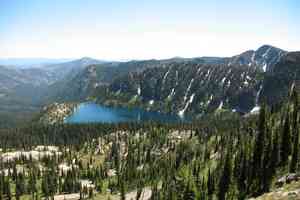
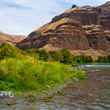

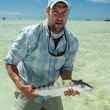
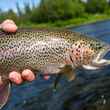
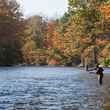

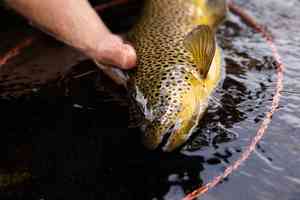


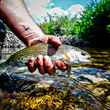
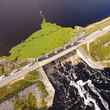
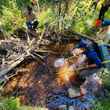
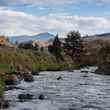


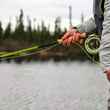

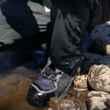

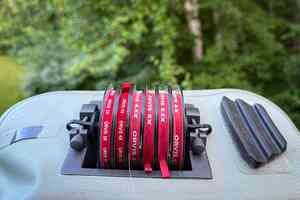
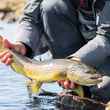
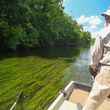

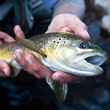
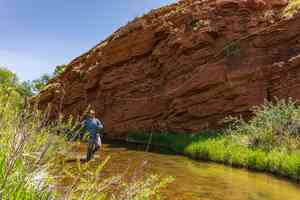


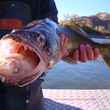
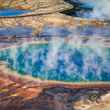
Comments